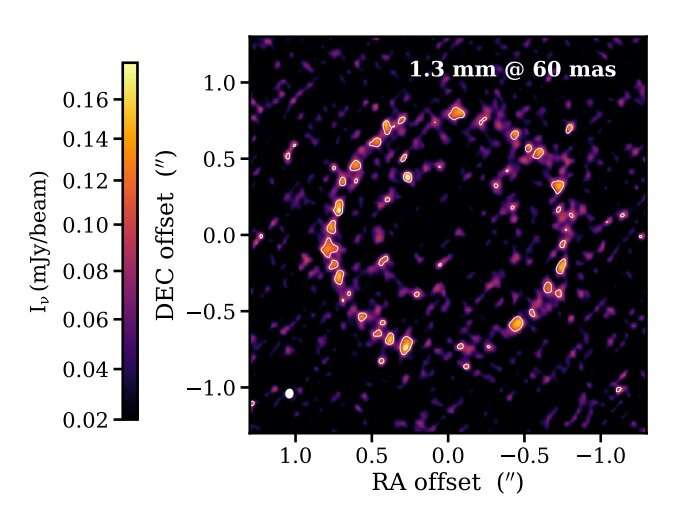April 4, 2023 report
This article has been reviewed according to Science X's editorial process and policies. Editors have highlighted the following attributes while ensuring the content's credibility:
fact-checked
preprint
trusted source
proofread
Large double-ring disk detected around the star 2MASS J04124068+2438157

Using the Atacama Large Millimeter/submillimeter Array (ALMA), an international team of astronomers has performed high-resolution observations of an M-dwarf star known as 2MASS J04124068+2438157. Results of the observational campaign, published March 25 on the arXiv pre-print repository, indicate that the star hosts a large double-ring dust disk.
At a distance of some 485 light years away from the Earth, 2MASS J04124068+2438157 (or 2M041240 for short) is an M dwarf of spectral type M3.5, estimated to be 4.7 million years old. The star has a radius of 1.2 solar radii, mass of about 0.42 solar masses, and its effective temperature is approximately 3,300 K.
Previous observations have found that 2M041240 hosts a very extended dust disk. Therefore, a group of astronomers led by Feng Long of the University of Arizona in Tucson, Arizona, decided to observe this star with ALMA, hoping to get more insights into the properties of the disk surrounding it.
"This paper presented new ALMA Band 6 observations of the disk around a low mass star 2MASS J04124068+2438157. We applied parametric Gaussian models to characterize the dust emission morphology in the visibility plane and performed Keck AO [adaptive optics] observations to explore the cause of the observed disk substructures," the researchers wrote.
ALMA observations found that the dust disk around 2M041240 consists only of two narrow rings at distances of 70 and 116 AU. Both rings appear to be quite narrow, with gaussian widths of 5.6 and 8.5 AU, respectively. The outer ring turned out to be narrower than the local pressure scale height, which suggest the presence of pressure bump that traps dust particles.
The size of the whole disk was estimated to be around 126 AU, which is much larger than disks with similar millimeter luminosity. According to the astronomers, this suggests that the disk of 2M041240 likely formed large and built the pressure bump at early times that sustained millimeter-sized grains at large radii.
The authors of the paper assume that planet–disk interactions are the most likely explanation for the observed gaps and rings in the disk of 2M041240. They added that the properties of the gap between the two rings, may indicate the presence of a Saturn-mass planet at about 90 AU from the star.
"Analyses of the gap/ring properties suggest a Saturn mass planet at ∼90 AU is likely responsible for the formation of the outer ring," the researchers concluded.
However, further observations are required in order to confirm this assumption. The authors of the study propose using NASA's James Webb Space Telescope (JWST) in order to verify whether or not the predicted Saturn-mass planet is orbiting 2M041240 in its outer disk.
More information: Feng Long et al, A Large Double-ring Disk around the Taurus M Dwarf J04124068+2438157, arXiv (2023). DOI: 10.48550/arxiv.2303.14586
Journal information: arXiv
© 2023 Science X Network




















